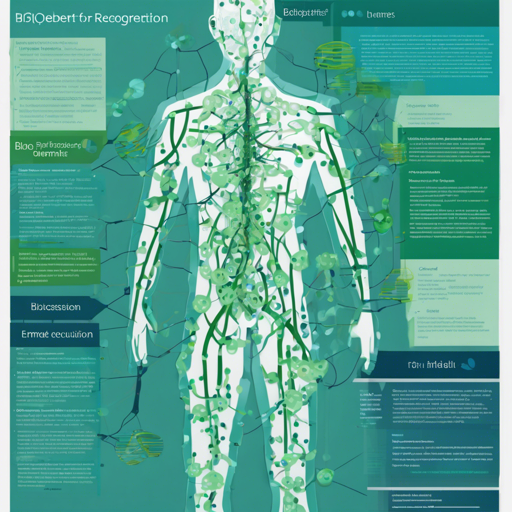In the world of natural language processing (NLP), Named Entity Recognition (NER) plays a crucial role by helping identify and classify key elements in text data. Today, we will explore how to utilize the bioBERT-base-cased-v1.2-finetuned-ner-CRAFT_Augmented_ES model effectively for NER tasks, focusing on its features, benefits, and troubleshooting tips to enhance your experience.
Overview of the bioBERT NER Model
This specially fine-tuned model is based on the dmis-lab/biobert-base-cased-v1.2 architecture and has been optimized on the CRAFT dataset. Its capabilities extend across six different entity tags including Sequence, Cell, Protein, Gene, Taxon, and Chemical. The model not only provides robust accuracy but also maintains an efficient balance among precision, recall, and F1 scores:
- Loss: 0.2251
- Precision: 0.8276
- Recall: 0.8411
- F1 Score: 0.8343
- Accuracy: 0.9676
How the Model Works: An Analogy
Imagine this model as a skilled librarian who categorizes multiple books within a vast library. Just like the librarian identifies genres, authors, and titles, the bioBERT model recognizes and classifies specific entities within a text. Instead of books, it analyzes words and phrases, assigning them corresponding labels (or tags) such as B-Protein and I-Chemical. Both the librarian and the model rely on earlier experiences—whether that’s learning about genres or training on labeled datasets—to enhance their identification skills.
Training and Evaluation
In order to achieve such impressive metrics, the model underwent rigorous training utilizing specific hyperparameters:
- Learning Rate: 3e-05
- Train Batch Size: 8
- Eval Batch Size: 8
- Seed: 42
- Optimizer: Adam with betas=(0.9,0.999) and epsilon=1e-08
- Number of Epochs: 4
Intended Uses and Limitations
While the bioBERT model is designed for accurate Named Entity Recognition, it’s essential to note its limitations as well. The full extent of the intended uses and potential performance drawbacks is still an evolving area needing more exploration.
Troubleshooting Ideas
If you encounter issues while working with the bioBERT model, consider the following troubleshooting tips:
- Check the Data: Ensure your training and evaluation datasets are correctly formatted and annotated.
- Hyperparameter Adjustments: Experiment with different learning rates and batch sizes for improved performance.
- Framework Compatibility: Make sure you are using compatible versions of frameworks like Transformers, Pytorch, and Datasets as noted above.
For more insights, updates, or to collaborate on AI development projects, stay connected with fxis.ai.
Conclusion
At fxis.ai, we believe that such advancements are crucial for the future of AI, as they enable more comprehensive and effective solutions. Our team is continually exploring new methodologies to push the envelope in artificial intelligence, ensuring that our clients benefit from the latest technological innovations.

